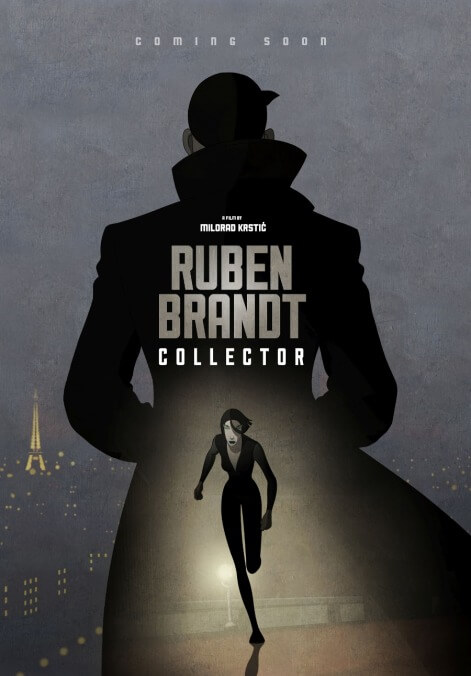A psychoanalyst named Ruben Brandt (voiced by Iván Kamarás) has terrible art-based nightmares. He treats four criminals for their addictions, but they eventually team up to help him with the bad dreams, galavanting around the world, stealing the famous artworks Ruben sees in his sleep. The plot is nonsensical, with a few silly twists that serve no purpose other than to propel the characters deeper into the art world. Really, you needn’t pay attention to it. Just look at the pretty pictures.
The artwork in every frame of this film becomes a kind of patchwork of art history. Again and again, multiple styles and eras converge: a cat evocative of Russian folk art, a woman resembling Botticelli’s Venus, a bird reminiscent of Chagall’s L’oiseau bleu. Even the humans are amalgams of the subjects in the great cubist paintings, with eyes askew or sometimes doubled. But Krstic expands his definition of art by conspicuously placing brand names and labels next to the masterworks. The FedEx logo or the engraved label on a metal music stand are, in this sense, just as much art as a Picasso or Basquiat. In one scene, a character stands on the people mover that runs beneath Michael Hayden’s The Sky’s The Limit, a light-show tunnel in Chicago’s O’Hare Airport. It’s essentially an unfinished public neon art piece, but Krstic’s decision to include it in such great detail forces the viewer to reconsider it as more than mere travel distraction.
Most surprisingly, Ruben Brandt, Collector sometimes operates like an animated George Miller movie, by way of its high-octane action sequences, editing, and pacing. One scene finds Rubin lounging out the window of a speeding train to save a small girl hanging on the outside. Instead of latching onto his hand, she bites it, preventing him from dashing back inside, keeping them in the path of an approaching train on the opposite track. Krstic cuts back and forth between Ruben with the girl and the ongoing train, the sound of a powerful engine grumbling. It’s a model of how to build tension and anticipation through editing. Krstic’s admiration of the art of filmmaking is also evident in his framing, which at times mimics Hitchcock. (The famous director’s shadow even projects on a wall, and one character makes Hitch-shaped ice cubes.)
There’s also a sly statement within the narrative about American art. As characters from major paintings spring to life to attack Ruben, the two American works—Edward Hopper’s Nighthawks and Andy Warhol’s Double Elvis—come after Ruben with guns. Take what you will from that. Regardless, it’s nice to be in the assured hands of an artist who knows his history, leaving behind little Easter eggs for folks in the know. For instance, snails feature heavily in this film, which could be considered just a surreal touch, but the gastropods have been a mainstay of art going back to the Medieval illuminated manuscripts, where knights would battle snails in the margins of biblical texts. Their meaning? Impotence, modesty, anything the artists or viewers projected onto them. Krstic’s film functions much in the same way. For all the art woven into every frame, Ruben Brandt, Collector is actually a bit of a blank slate, with a story so appropriately thin and strange that its meaning is whatever the viewer wishes. It’s art.

